"Embrace your skin's journey, milia are just tiny bumps on the road to a flawless skin."
Have you ever noticed tiny white bumps on your face and wondered what they were? These little nuisances, known as milia, are more common than you might think and can affect anyone from infants to adults. Understanding what causes these small cyst-like lesions and how to manage them is crucial for maintaining healthy skin.
For those in search of customised treatments, NU.U Clinic provides practical solutions. Specialising in addressing conditions like milia, they ensure their clients receive a treatment plan tailored to their unique skin needs.
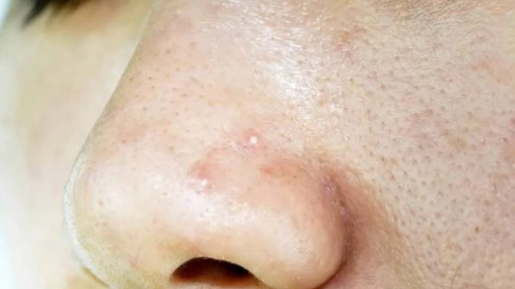
Milia
Milia are small, white or yellow cyst-like lesions that form under the skin when dead skin cells or keratin, a protein found in our skin, hair, and nails, become trapped. These bumps are usually 1-2mm in size and can appear anywhere on the body. They are most commonly found on the face, particularly around the eyelids and cheeks. Milia can occur when the skin loses its natural ability to exfoliate, a process that can slow down with ageing, leading to the accumulation of dead skin cells and keratin beneath the skin surface.
Causes of Milia

Trapped Keratin
The primary cause of milia is keratin becoming trapped beneath the skin's surface. Keratin is a protein that is a key component of the skin, hair, and nails. Normally, the skin sheds dead cells to make room for new ones, but when this process is disrupted, keratin accumulates, leading to the formation of milia. This disruption can be due to a variety of factors including ageing, which naturally slows down cell turnover, and improper skin care practices that fail to remove dead skin cells effectively.
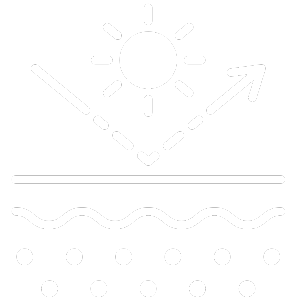
Sun Damage
Prolonged exposure to the sun can damage the skin in multiple ways, one of which includes affecting its natural exfoliation process. UV radiation from the sun can lead to the thickening of the outer layer of the skin, which can trap keratin and dead skin cells underneath, contributing to the development of milia.
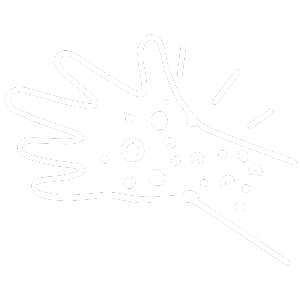
Skin Trauma
Injuries to the skin, such as burns, blisters, or irritation from cosmetic procedures, can also lead to the formation of milia. This type of milia, known as secondary milia, occurs because the healing process can interfere with the skin's ability to exfoliate properly, trapping keratin beneath the skin's surface.
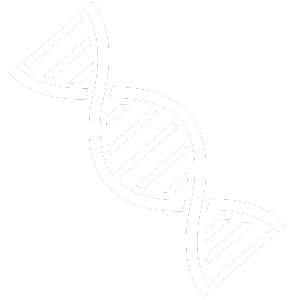
Genetic Factors
Some individuals are genetically predisposed to developing milia. In certain cases, milia are associated with genetic conditions, such as Gardner syndrome, which can lead to eruptive milia. This genetic link suggests that for some, milia formation is influenced by hereditary factors that affect skin characteristics and behaviours.
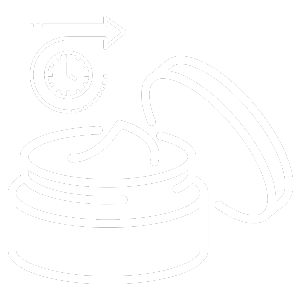
Long-term Use of Certain Creams
The long-term application of certain topical creams, especially those containing steroids, can contribute to milia formation. These products can alter the skin's texture and interfere with its natural renewal process, leading to the accumulation of keratin beneath the skin.
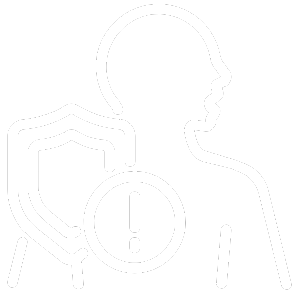
Autoimmune Conditions
In rare instances, autoimmune conditions that affect the skin may play a role in the development of milia. These conditions can cause changes in skin behaviour, including how it heals and regenerates, potentially leading to an increased risk of milia.
Types of Milia
At NU.U Clinic, understanding the specific type and underlying cause of milia is the first step in devising an effective treatment plan. By combining personalised care with the latest advancements in dermatological treatments, individuals can achieve significant improvements in their skin's appearance and health.
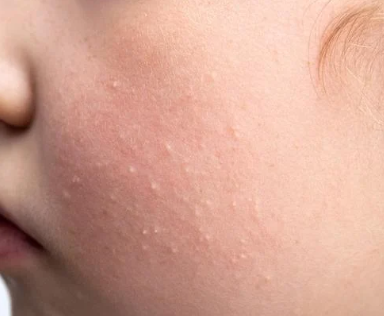
Neonatal Milia
Neonatal milia are commonly found in newborns, with up to half of all babies experiencing these harmless white bumps on their face, especially around the nose and cheeks. They typically resolve on their own within a few weeks to months.
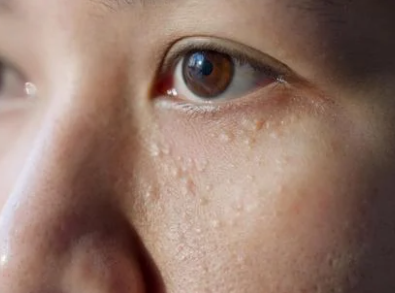
Primary Milia
This type occurs in both children and adults, appearing on the eyelids, cheeks, forehead, and genitals. Primary milia are harmless and generally disappear over time, though they may persist longer than neonatal milia.
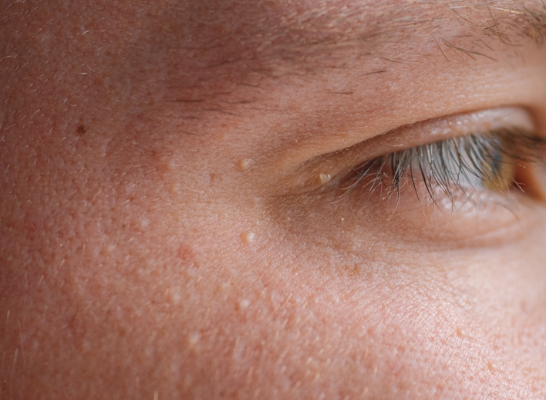
Secondary Milia
Secondary milia result from skin damage, such as sunburn or blistering, or as a side effect of certain medications or prolonged use of topical corticosteroids. They may require professional treatment to resolve.
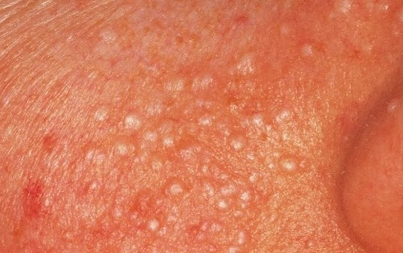
Milia en Plaque
A rare form, milia en plaque, is characterised by a patch of white bumps on the cheeks, jaw, or temples, primarily affecting women and individuals assigned female at birth between 40 and 60 years. Treatment for milia en plaque can be challenging.
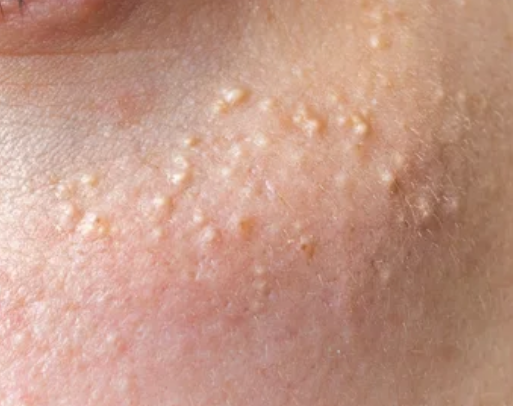
Multiple Eruptive Milia
These appear as clusters of small, white bumps on the face and upper body, commonly seen in young children and potentially linked to atopic dermatitis or other skin conditions. They can be itchy and uncomfortable, sometimes requiring medical intervention.
Treatments for Milia

CO₂ Laser Treatment
CO₂ Laser Treatment with RF ((Radiofrequency) is used to improve skin texture and address signs of ageing by delivering precise laser energy to targeted skin layers. This process may help reduce the appearance of wrinkles and age-related skin changes while supporting collagen production. Treatment outcomes vary based on individual skin conditions, and a consultation with a qualified healthcare professional is recommended to determine suitability.
Conclusion
In conclusion, milia, though small and often harmless, can be a source of frustration for many. Understanding their causes lays the groundwork for effective treatment strategies. While certain cases of milia resolve on their own, persistent or bothersome instances can benefit greatly from professional interventions like the Smartxide Touch.
Every skin is unique, and factors such as underlying causes, skin type, and individual concerns play a crucial role in determining the most effective approach. Professional consultation ensures that treatment not only targets milia but also aligns with your skin’s specific needs, promoting overall skin health and preventing future occurrences.
"A smooth complexion starts with understanding what lies beneath."





 +65 6732 9989
+65 6732 9989 +65 9152 3582
+65 9152 3582